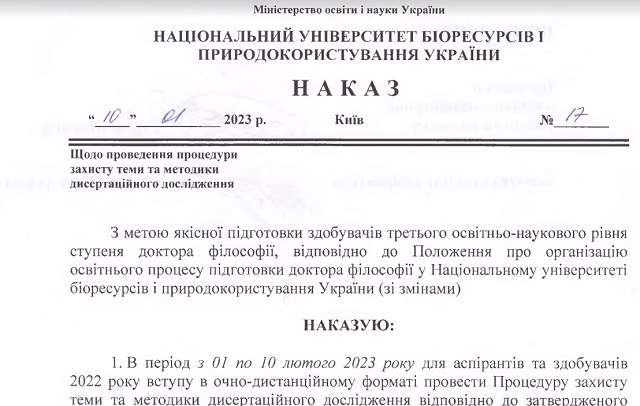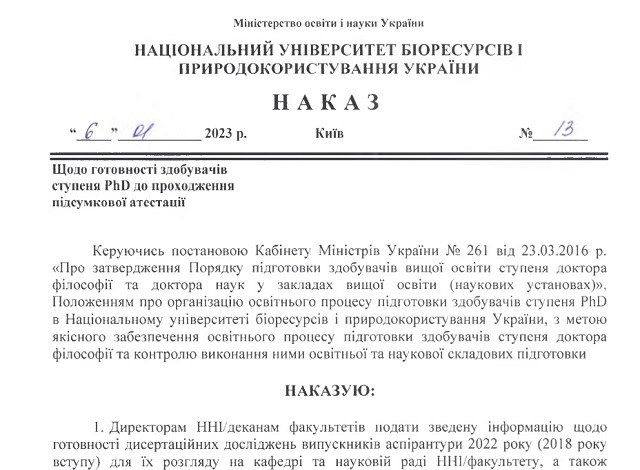Ph.D. Планування аспірантської освітньо-наукової діяльності
Незважаючи на тяжкі будні військового стану, здобувачі ступеня доктора філософії активно продовжують свою освітньо-наукову діяльність у стінах НУБіП України. Кожен з них рухається своєю чіткою траєкторією:
- аспіранти першого року навчання – впродовж листопада-грудня 2022 року склали екзаменаційні випробування дисциплін загальнонаукової підготовки та вже з 20 лютого поточного року розпочнуть вивчати спеціальні (фахові) дисципліни (за окремими освітньо-науковими програмами);
- аспіранти другого року навчання – впродовж листопада-грудня 2022 року склали екзаменаційні випробування фахових дисциплін та дисциплін вибіркової компоненти (за окремими ОНП), наразі активно продовжили свої наукові дослідження;
- аспіранти третього року навчання – незважаючи на зовнішні фактори продовжують проходити педагогічну практику, адже окремі освітньо-наукові програми планують її впродовж вересня-грудня (ОНП Освітні, педагогічні науки, ОНП Професійна освіта, ОНП Психологія, ОНП Філософія, ОНП Історія України, ОНП Агрономія, ОНП Захист і карантин рослин; ОНП Садівництво та виноградарство, ОНП Екологія, ОНП Галузеве машинобудування, ОНП Маркетинг, тощо), а також впродовж лютого-травня (ОНП Право, ОНП Хімія, ОНП Харчові технології, ОНП Економіка підприємств та галузей національного господарства, ОНП Менеджмент тощо).
- аспіранти четвертого року навчання – активно завершують написання своїх наукових досліджень та подають на рецензування фінальний варіант дисертацій своїм науковим керівникам.

Враховуючи важливість своєчасного захисту своїх напрацювань аспірантами останніх років навчання, було заплановано провести 07 та 08 лютого засідання науково-методичної ради гарантів та заслухати наукових керівників аспірантів та здобувачів 2019 року вступу (4-го року навчання), щодо стану готовності дисертаційних досліджень для представлення її на науковій раді ННІ/факультету.
З метою формування структурованої моделі наукових досліджень за попередньо обраною тематикою аспірантів першого року навчання, ректоратом НУБіП було прийнято рішення щодо проведення в період з 01 по 10 лютого нової Процедури захисту теми та методики дисертаційного дослідження за участі 3-х науковців відповідної спеціальності що нестиме консультаційний характер.

Варто загадати також і про заплановану атестацію аспірантів всіх років навчання (в тому числі для аспірантів з КНР) впродовж 13 – 28 лютого. Для більшості здобувачів ступеня доктора філософії атестація буде проміжною, проте саме під час даного заходу атестаційна комісія має можливість ознайомитись зі здобутками аспірантів не лише науковими, а й освітніми – всі здобувачі представлятимуть комісії свої результатами складених екзаменаційних випробувань.

Наразі, впродовж січня місяця всі аспіранти мають можливість інтенсивно поринути у наукові дослідження, написання своїх розділів дисертаційних досліджень та фахових статей, і вже в лютому гордо відзвітуватись за свої наукові здобутки.
Крокуємо до перемоги разом, Будьмо сильними на нашому науковому фронті!
Віталій Вакуленко,
завідувач відділу аспірантури